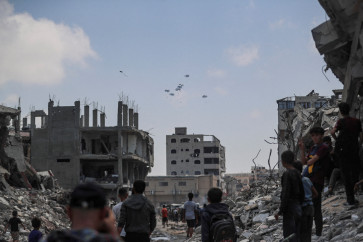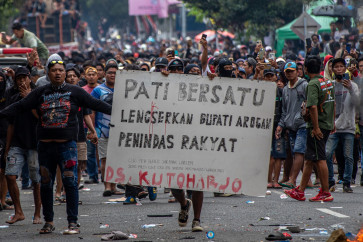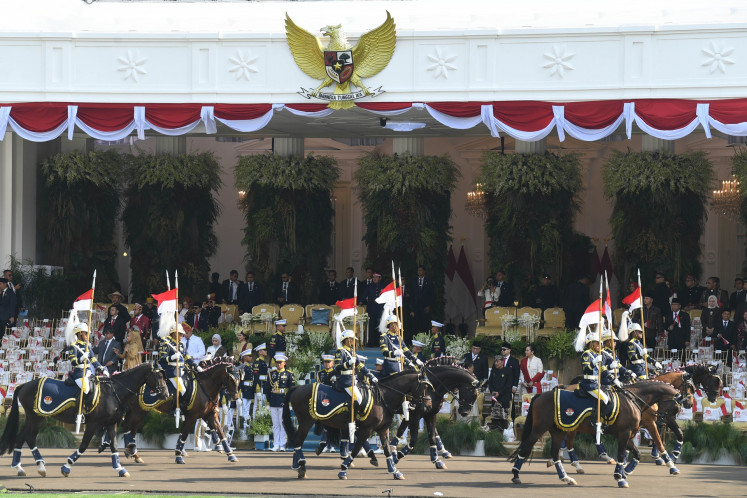Popular Reads
Top Results
Can't find what you're looking for?
View all search resultsPopular Reads
Top Results
Can't find what you're looking for?
View all search resultsResidents vow to keep fighting over Koto Panjang Dam damage
A group of residents has vowed to continue fighting despite a recent move by the Japanese supreme court to reject a class-action lawsuit on environmental and material damage caused by the development of the Koto Panjang Dam in West Sumatra
Change text size
Gift Premium Articles
to Anyone
A
group of residents has vowed to continue fighting despite a recent move by the Japanese supreme court to reject a class-action lawsuit on environmental and material damage caused by the development of the Koto Panjang Dam in West Sumatra.
The court rejected in March the lawsuit filed by 8,396 residents in Koto Panjang against the Japanese government and aid agencies the Japan International Cooperation Agency (JICA), Japan Bank for International Cooperation (JBIC) and Tokyo Electric Power Services Co.
According to the court, providing compensation to Indonesia is not the responsibility of the Japanese but the Indonesian government.
The residents first filed a lawsuit with the Tokyo district court 13 years ago on Sept. 5, 2002; however the court rejected the case in 2009.
People's Struggle Forum for Victims of the Koto Panjang Dam secretary-general Iswadi said the lawsuit rejection was not the main issue.
'For us, the victims, losing or winning is part of the process. The courts, be they in Japan or Indonesia, are the same. They will never side with the people,' said Iswadi.
He said victims of the dam development were the most deprived, as they were forced out the village and the promises made to them had never been realized.
According to Iswadi, in 1993, 350 families from Tanjung Pauh village, Koto Baru district, Limapuluh Kota regency, West Sumatra, affected by the project were relocated. Each family was given three land deeds to build a house (1,000 square meters), to grow food crops (4,000 sqm) and for farming (2 hectares).
'We were given land but the quality of the houses was far from adequate and we did not receive the plant seedlings as promised,' said Iswadi.
'The land was also very small compared to what we had before while the number of families has doubled,' he added.
He cited that in the former village, his extended family, comprising 15 households, owned 3,000 hectares of land but upon relocation each household only received 2.5 hectares.
Indonesian Forum for the Environment (Walhi) campaign manager Edo Rakhman said although they had to accept the defeat in court, the lawsuit filed against the Japanese courts had served as a lesson and would be documented. The case also serves as an important lesson for the government so it would not carry out activities funded by overseas loans.
Edo added there was still an opportunity to resume the legal struggle through Indonesian and international courts.
'What we will do next is demand that the National Commission on Human Rights [Komnas HAM] get involved in the struggle,' said Edo.
Walhi has reminded the National Development Planning Boards (Bappenas) to no longer accept loan assistance for projects, especially dams.
The Koto Panjang Dam project, funded through a Japanese soft loan amounting to 31 million yen, engulfed the Kampar Kanan and Batang Mahat rivers confluence area, spanning 124 square kilometers.
The dam, located in Riau and West Sumatra provinces, was built to generate 114 megawatts (MW) of electricity.
The ground breaking ceremony for the project was conducted in 1991, after 16,954 people were forcibly evicted from 10 villages in the area.
Thirty-one elephants were also relocated, 25 of which later died after failing to adapt to their new environment.
An 11th century Muaratakus Hindu temple was also submerged during development.










